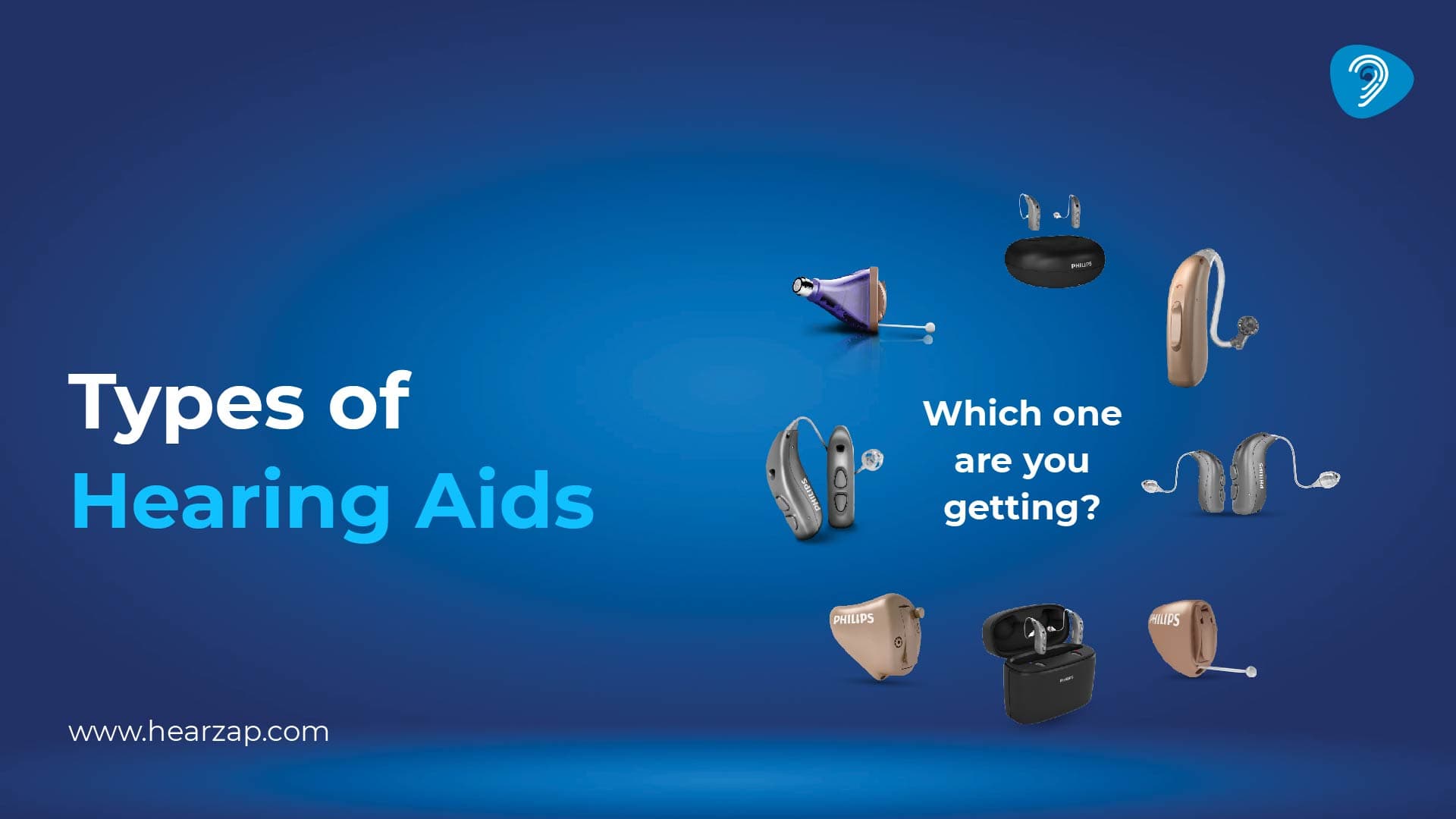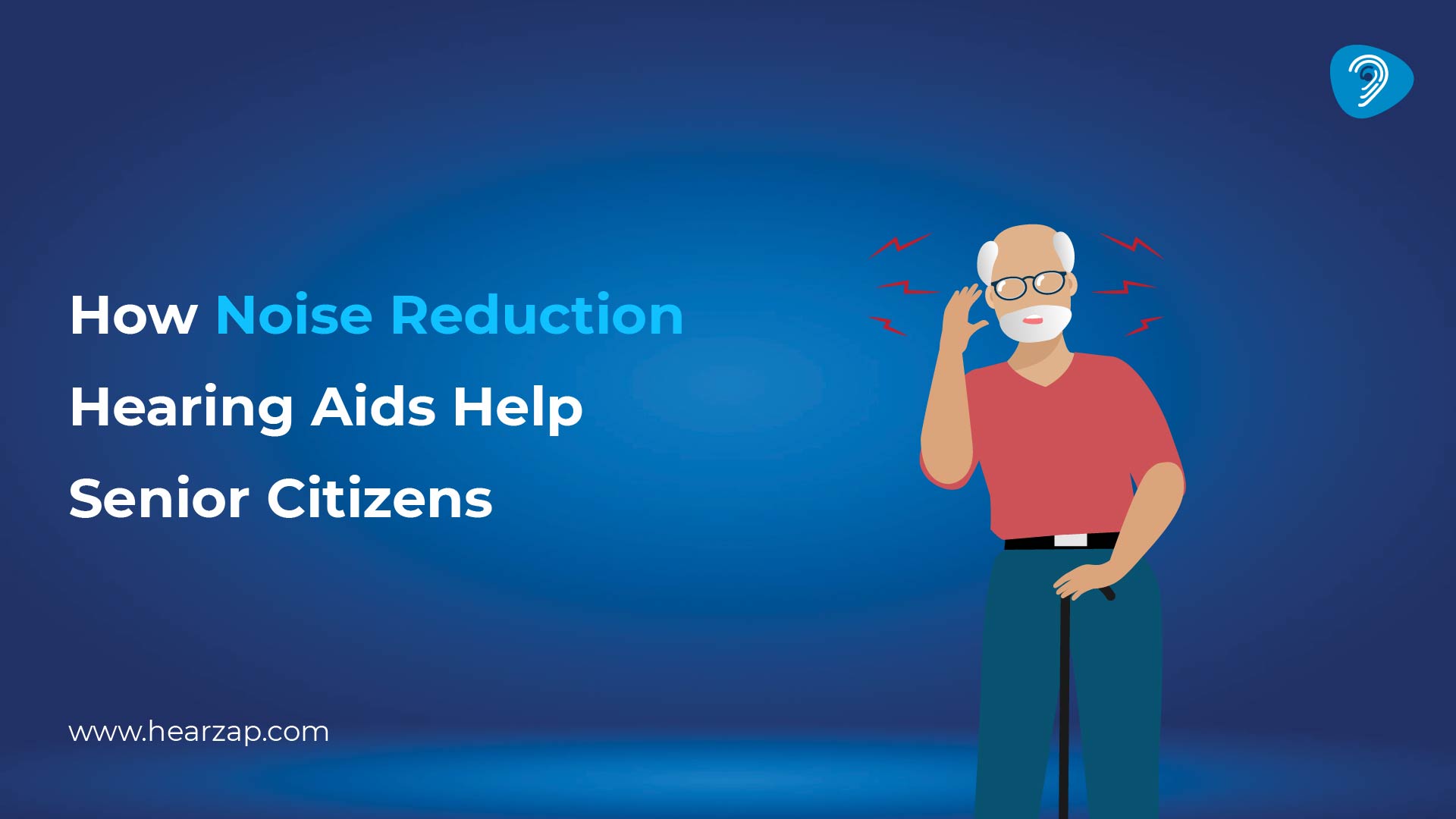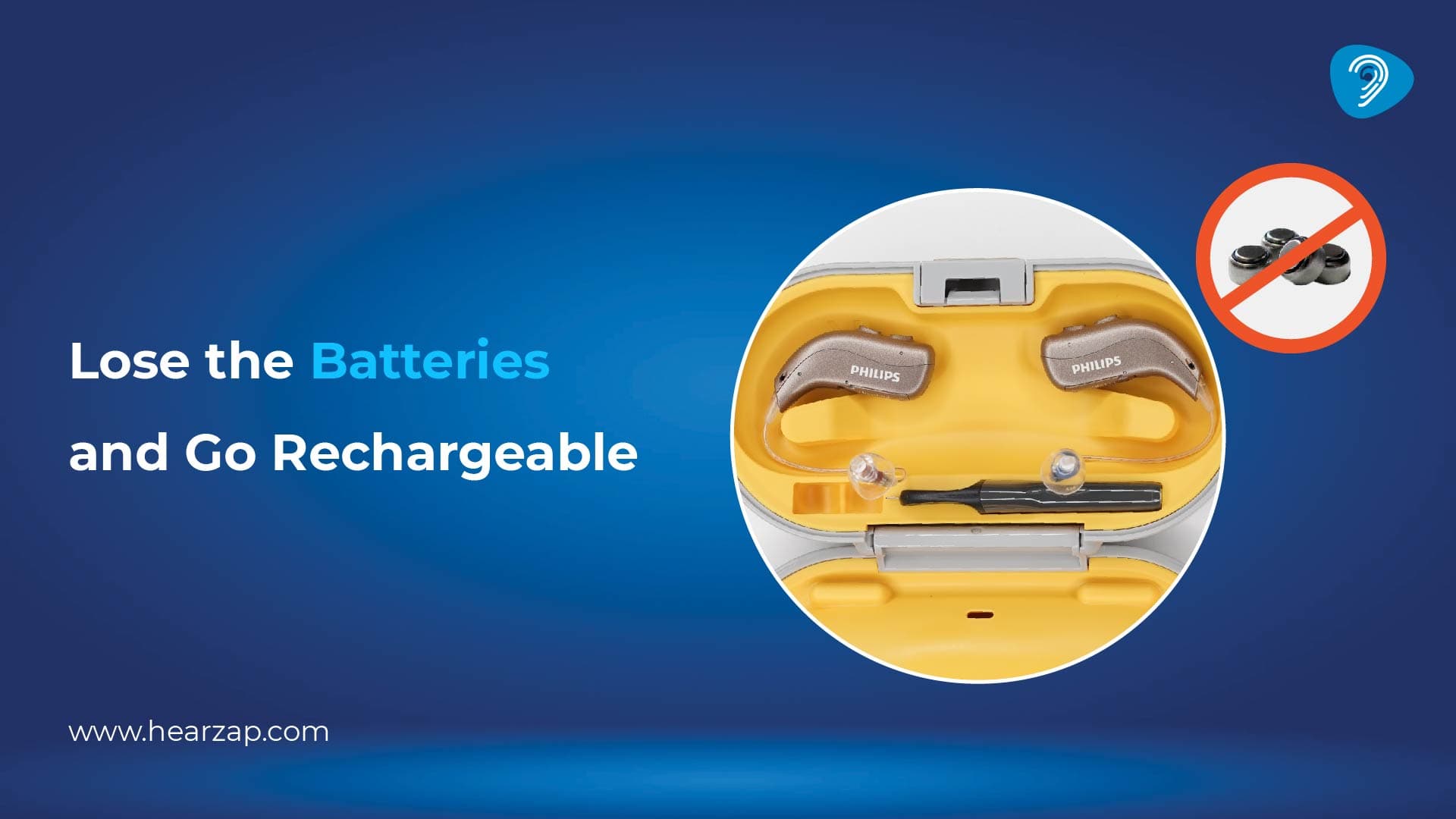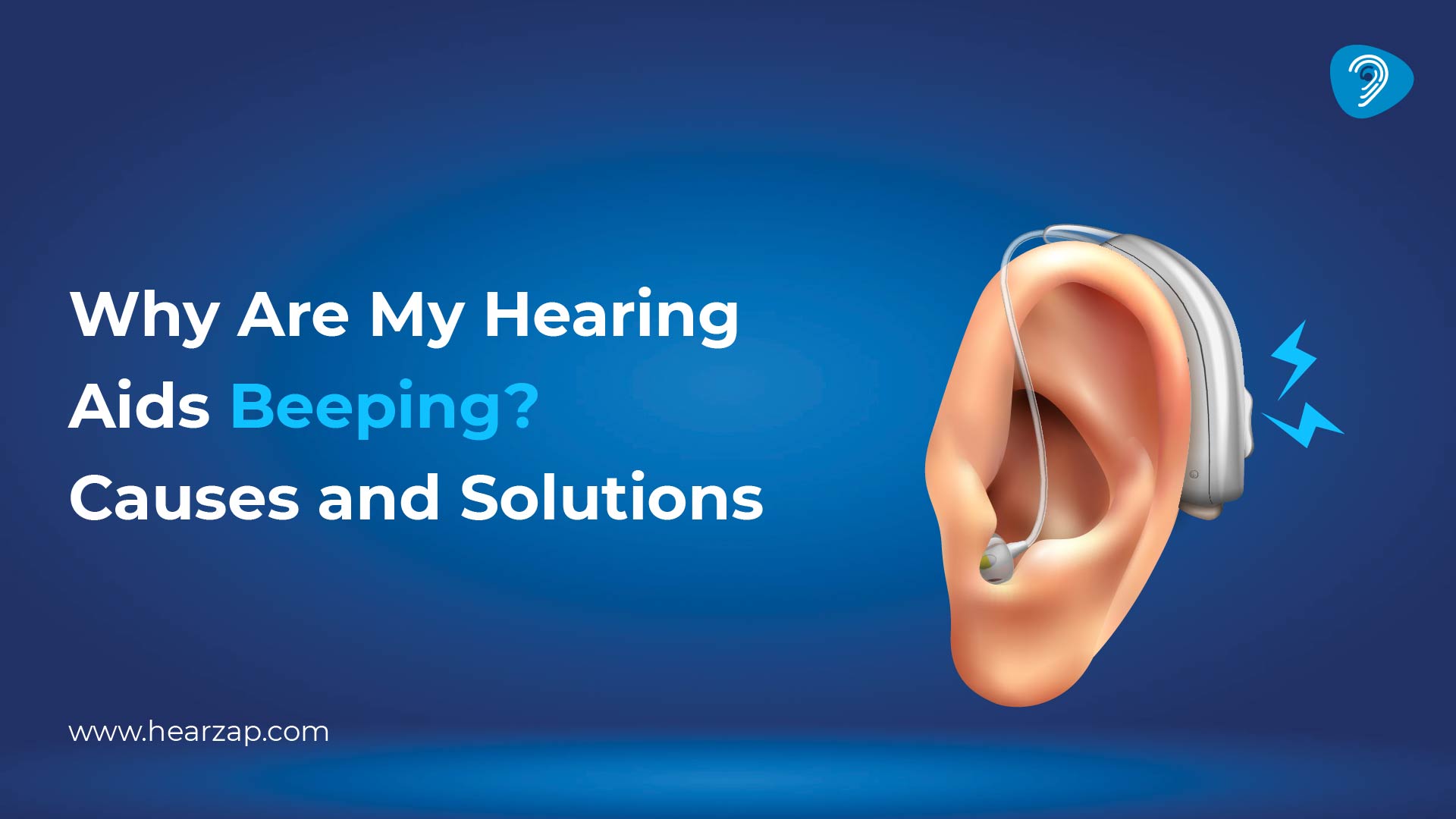HEARING AIDS
Types of Hearing Aids
By Team Hearzap | July 7, 2025
Finding the Right Hearing Aid: A Guide to Types of Hearing Aids
Finding the right hearing aid can feel overwhelming with so many types of hearing aids available today. Whether you’re dealing with mild hearing loss or need a solution for more severe hearing challenges, understanding the different types of hearing aids can make all the difference.
With advancements in technology, hearing aid types are no longer just about amplifying sound; they now offer sleek designs, enhanced comfort, and even features like Bluetooth connectivity. Let’s look at Behind-the-Ear (BTE), In-the-Ear (ITE), In-the-Canal (ITC), Completely-in-Canal (CIC), Receiver-in-Canal (RIC), and Invisible-in-Canal (IIC) models—each representing different hearing aid styles and suiting various needs.

BTE, ITE, RIC & IIC Hearing Aids Explained: Which Style Fits Your Hearing Loss Best?
Behind-the-Ear (BTE) Hearing Aids:
These hearing aids types are worn behind the ear, with a tube connecting to a custom mould inside the ear.
- BTE models are suitable for individuals with a wide range of hearing loss, from mild to severe.
- They offer powerful amplification and are easy to adjust, making them one of the most reliable kinds of hearing aids.
In-the-Ear (ITE) Hearing Aids:
ITE types of hearing aid fit directly into the outer ear.
- Designed for individuals with moderate to severe hearing loss, they provide excellent amplification.
- Due to their larger size, they’re easier to handle—ideal among hearing aid types for those who find smaller devices challenging.
Receiver-in-Canal (RIC) Hearing Aids:
RIC hearing aids type are similar to BTE but have the receiver positioned inside the ear canal for a more discreet look.
- This comfortable style is popular for mild to severe hearing loss.
- These hearing aid styles are less visible than BTE models and deliver great sound quality.
Invisible-in-Canal (IIC) Hearing Aids:
IIC hearing aid types are placed deep inside the ear canal, making them nearly invisible.
- Perfect for individuals with mild to moderate hearing loss.
- Despite their compact size, these types of hearing aids offer advanced digital technology for superior clarity.
In-the-Canal (ITC) Hearing Aids:
ITC hearing aids types sit partially in the ear canal, making them less visible than ITE but slightly noticeable.
- Ideal for individuals with mild to moderate hearing loss.
- These hearing aid styles offer a good balance of discretion, ease of use, and sound quality.
Completely-in-Canal (CIC) Hearing Aids:
CIC types of hearing aids fit entirely inside the ear canal, ranking among the most discreet options.
- Suited for mild to moderate hearing loss.
- Although small in size, these kinds of hearing aids provide excellent sound quality and minimal visibility, but may not be suitable for severe cases.
By understanding the types of hearing aids and how each one fits different needs, you can make a confident, informed decision. Whether you prefer visible models like BTE or subtle styles like IIC, there’s a perfect fit among the many hearing aid styles available today.
FAQs
What is the degree of hearing loss?
The degree of hearing loss is the severity of a person's hearing capability, which ranges from normal, mild, moderate, moderately severe, severe, or profound hearing loss.
What are the 5 levels of hearing loss?
There are five levels of hearing loss: normal, mild, moderate, severe, and profound. Phillips and Zenaud are the best brands for customized hearing solutions.
What type of hearing aid is best?
The best type of hearing aid depends on hearing needs. Phillips RIC and Zenaud BTE models are mostly praised brands for comfort and good performance.
What type of hearing aid is best for tinnitus ?
For tinnitus relief, the hearing aids that have built-in sound therapy, like Zenaud's tinnitus maskers or Phillips Hearlink, are the preferred choice.
Related Blogs

Bluetooth Hearing Aids: 5 Main Advantages

RIC Hearing Aid: What You Need to Know

Hearing Aid Maintenance: Dos and Don’ts

Hearing Aids For Severe and Profound Hearing Loss

How Noise Reduction Hearing Aids Help Senior Citizens

Why Rechargeable Hearing Aids Are the Smarter Choice in 2025

Why Are My Hearing Aids Beeping? Causes and Solutions
Contact us
We are here for all your hearing needs, from hearing tests to hearing aids. Fill out the form below, and we will give you a call soon.
Recent Blogs
By Team Hearzap | July 8, 2025
By Team Hearzap | July 7, 2025
By Team Hearzap | July 5, 2025
By Team Hearzap | July 4, 2025
By Team Hearzap | July 4, 2025









